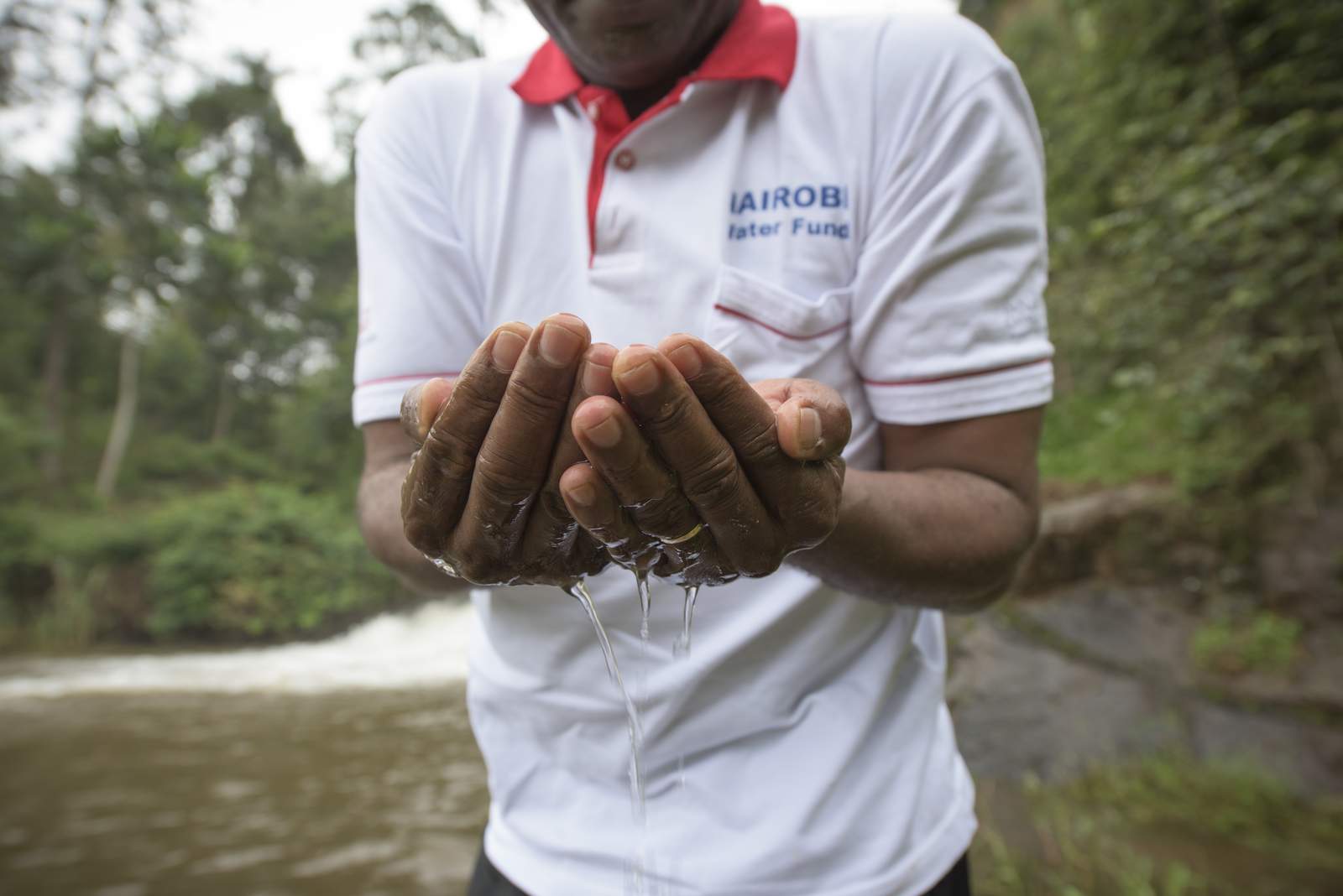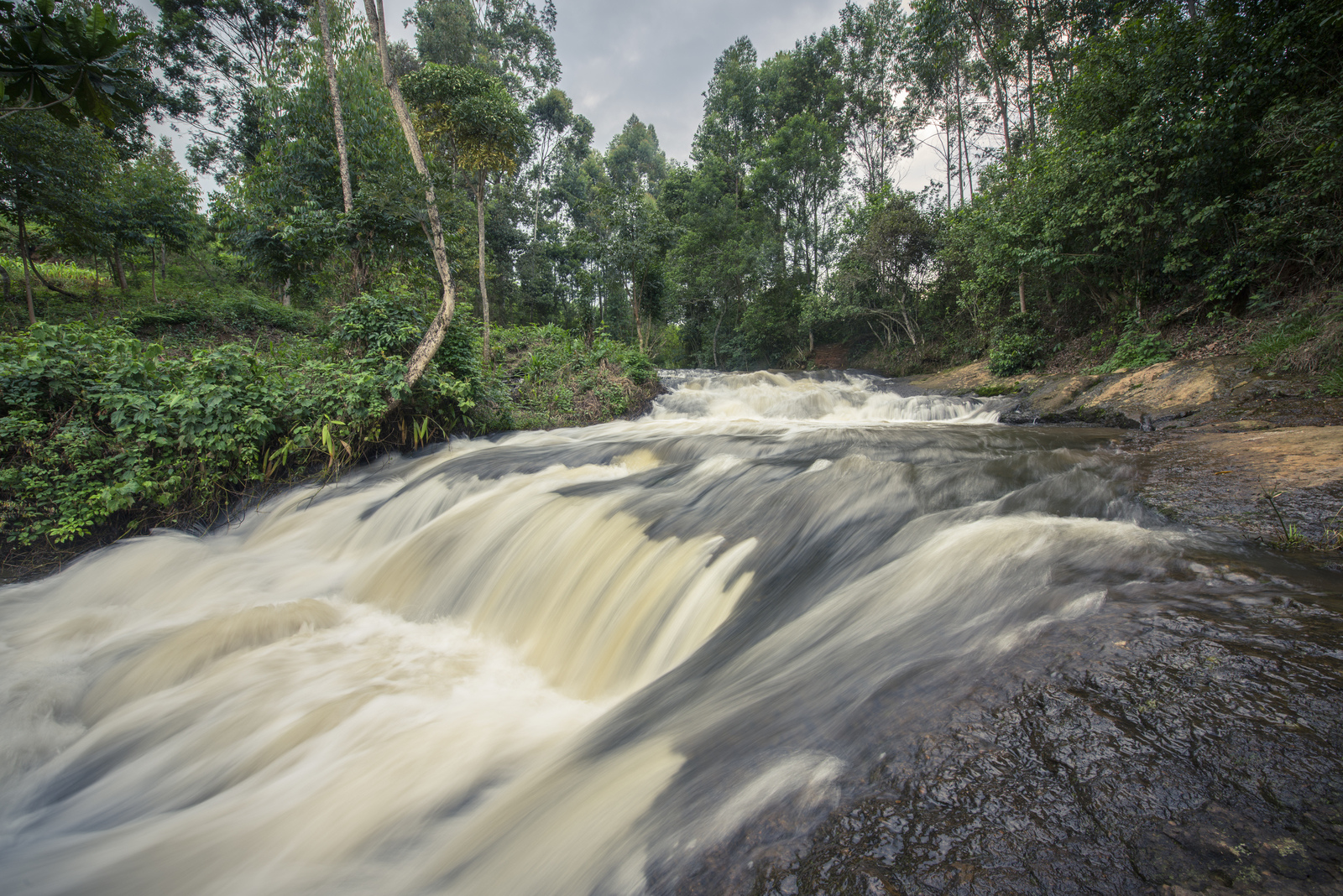

Story
Where does climate meet water meet soil? If we look after one, we often look after another. N4C is excited about the results of a groundbreaking public-private partnership which is mobilizing investments and collaboration in Kenya to help provide clean fresh water to Nairobi and its residents.
The Tana River provides 95 percent of the water supply for Nairobi, and generates 50 percent of the energy that powers the nation. Flanking the river on its path to the capital are 300,000 smallholder farms, all depending on—and having an impact on—the river. Unsustainable farming practices are sending sediment into the river, resulting in higher costs for water treatment, lower water levels, and lower hydropower output. Water security will only become more challenging as climate change brings increasingly unpredictable rainfall and the city’s population continues to climb.
That’s why The Nature Conservancy is bringing diverse partners together to address these challenges with a water fund, a proven model which is founded on the principle that it is less expensive to prevent water problems at the source, than it is to address them further downstream. Urban water users invest in upstream watershed conservation strategies, creating benefits for themselves as well as rural populations.
“Investing in watershed protection is a powerful strategy to secure clean water, to mitigate and adapt to climate change, protect biodiversity, and support human health and well-being across watersheds. The returns on such an investment can’t be overestimated in terms of economic, of social and of environmental gains. In that sense, Water Funds have the potential to enable multiple facets of global development.”
Investing in water
Such funds provide a secure and transparent tool for corporate and public investors to direct resources to conservation strategies that will yield the greatest returns for the common good and the economy. The primary focus of the Upper Tana-Nairobi Water Fund (UTNWF) is to improve farming practices in the watershed. While this water fund is the first of its kind in Africa, it builds on the expertise TNC scientists have gained from designing more than 30 water funds around the world.

We have estimated that around 80 percent of cities around the world could meaningfully reduce sediment and fertilizer pollution through forest protection, landscape restoration and better agricultural practices. Cleaner water would save municipal utilities $890 million every year.
On a global scale
For decades, forests on steep hillsides along the Tana River have been slowly converted to farming for tea, coffee, and other produce. Reduced soil productivity from erosion and competition for space have forced farmers onto steeper and steeper slopes. Now, during the rainy season, soil is washed into the river, reducing the productivity of farmland and clogging water distribution and power generation facilities with sediment. The water fund partners are working with more than 15,000 farmers, and are on course to reach 50,000 farmers by 2020. In just the first three years, these initiatives have led to 27 million more liters of water flowing into Nairobi each day.
Good soil management is an unsung hero in the climate story. Soil contains two to three times more carbon than the atmosphere. This means that small changes in soil carbon—either improvement or deterioration—can have a big impact on atmospheric carbon. And increasing or maintaining soil organic carbon has benefits. In addition to helping to in the fight against climate change, it improves soil health and fertility.
“There was a time when I almost lost my house. Heavy rains would rush down the hillside and take the soil with it. I dug holes and built two walls, but it didn’t work. I needed to save my house. Now I am making terraces the right way and planting napier grass and bamboo to prevent erosion. It’s helping me control water running to the river. My farm is becoming more stable. Touching the soil, I feel like I’m touching life. You can’t grow food without soil. I don’t want it to just wash away and contaminate the water.” Jane Kabugi, Upper Tana basin farmer.
Reforestation, forest protection and agricultural best management practices like cover crops, if implemented fully across the world’s urban source watersheds, could store or capture up some 10 gigatonnes of CO2 annually. The full suite of NCS including wetlands and coastal areas adds up to around 11 gigatonnes. That’s a big number and would help meet the emissions gap where we need to be to get to under 2 degrees.
Source water protection is a vehicle not only for water security, but for mitigating and adapting to climate change, protecting biodiversity, and improving the health and well-being of both upstream and downstream communities. It’s a win-win for everyone—now it’s time to scale up.